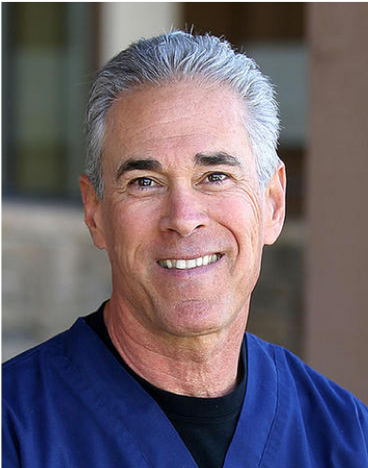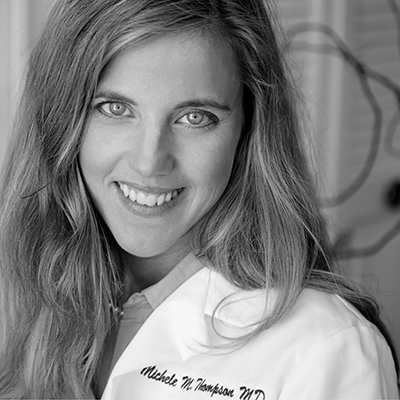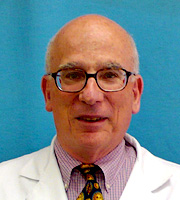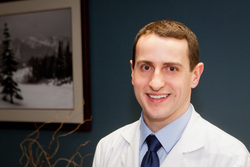
QUESTIONS AND ANSWERS ON AGING SKIN
WHAT IS PHOTODAMAGE AND HOW CAN IT BE PREVENTED?
“Photodamage” is a term that encompasses all harmful interactions between sun and skin, both acute and chronic. Virtually everyone is acquainted with the red, swollen, stinging experience of sunburn. Yet, many are unaware that accumulated sun exposure may lead to a wide variety of delayed effects, such as skin cancers, scaly pre-cancers (actinic keratoses) and other effects, like facial wrinkling, which we commonly assume are due to aging. Although the word “photo” simply means light, most skin researchers believe the effects seen with photodamage are caused by solar-generated long and short wave ultraviolet light (also know as UVA and UVB).
The prevention of photodamage is simple. First, avoid sun exposure during the peak hours of 10 am and 3 pm. Second, wear long sleeved clothing and broad brimmed hats. Finally, since peak sun exposure may be unavoidable and because loosely woven fabrics may allow up to 50% penetration of ultraviolet light, apply a broad spectrum sunscreen that protects against UVA and UVB rays, such as SolBar.
Because 80% of a lifetime Sun exposure may be accumulated before the age of 20, the most effective prevention of photodamage is regular use of sunscreen by children and teens. Fortunately, it’s never too late to start a regimen of protection., A dramatic improvement can be seen in the severely photodamaged skin of older patients who use a broad-spectrum sunscreen with an SPF of at least 15 every day.
IS NORMAL AGING OF THE SKIN DIFFERENT THAN PHOTOAGING?
Yes, and this has been an area of fascinating research in the last decade. Although skin does undergo some alterations with the passage of time, such as thinning, dryness and laxity, these aging changes are very mild in sun-protected skin. In contrast, sun exposed skin undergoes both photoaging and intrinsic aging, resulting in the more dramatic finding we typically associate with coming of age: wrinkles, laxity, mottling of pigmentation scaly-ness or dryness and accentuation of small blood vessels. A simple way to illustrate this is to compare the skin on the back of the hand or the face with sun-protected skin such as the breast of abdomen.
WHAT CAUSES LIVER SPOTS?
“Liver Spots” are large flat or scaly brown spots that develop o the backs of the hands. They are so named because they have a liver-like color, not because they result from liver disorder. Most liver spots are simply large, sun-induced freckles. The only way to avoid them is to use sun protection early in life. These spots are of little medical consequence. They are one of a large group of benign skin growths patients acquire with age an sun exposure. A common brown, scaly growth known as keratosis may give the appearance of a liver spot when it arises in its flat form on the back of the hands. The thicker, dark brown, scaly, “stuck-on” looking keratosis is often found on the torso of older adults.
WHY DOES MY SKIN SEEM TO GET DRIER AS I GET OLDER?
Once again the key to this question may lie in the difference between sun-exposed and sun-protected skin. Sun-protected skin in older patients is only slightly drier than that in younger patients Chronically sun-exposed skin cannot maintain itself as well as sun-protected skin. This dryness should be controllable with the regular use of effective moisturizing creams and lotions.
HOW DO YOU KEEP THE SKIN ON THE SOLES OF THE FEET SOFT AS YOU AGE?
This is a common complaint of older patients A hot topic of research in the treatment of dry skin has been the effect of creams containing. the alpha hydroxy acids. These may not only moisturize the skin but cause it to grow in a more normal and less scaly fashion.
©2011 Park City Dermatology. Last updated March 24, 2011

The Big 3 of Photoaging Prevention:
- Don’t smoke. It ruins the skin (as well as lungs and other organs) and ages the skin by decades.
- Use a daily moisturizer with an SPF of at least 30 every day. That means winter, summer, rain, shine, outside or inside. Long-wave ultraviolet A rays pass right through our Northwest cloud cover, as well as our car and house windows. While these UVA rays do not lead to a sunburn or tan, they are radiation, and damage skin cells leading to photoaging — not to mention skin cancer. Find a moisturizer with a texture and feel that you love with at least SPF 30 and make it a daily morning habit, like brushing your teeth. These moisturizers are now easy to find, and Dr. Thompson can point you toward several great, inexpensive products.
- Use a retinoid cream on your face at night. This derivative of vitamin A is scientifically proven to have a restoring and rejuvenating effect on the skin, evening and brightening skin tone and fading fine lines. It also has been shown to prevent pre-cancers! Dr. Thompson writes prescriptions for this product.

Most people could easily describe the outward appearance of an aging face: changes in facial shape; increased prominence of certain features, such as the nose; decrease in the vertical height of the mouth; recession of the gums and teeth; and loss of hair and skin color. In addition, you frequently find accentuation or wrinkling of the natural action lines of the face, sagging, jowl and pouch formation, generalized dryness (often severe), and laxity and inelasticity of the skin.
Dermatologic researchers and others interested in the aging process are actively investigating the precise nature of the structural and functional alterations in the skin that account for aging. Although we have learned much in the past decade, we do not, unfortunately, have all the answers yet. We do know that as skin ages, it tends to produce fewer new cells, and that damaged cells are repaired less quickly and less effectively. At the same time, cells in the horny layer lose some of their ability to adhere to one another. The epidermis and dermis become thinner, and the horny layer becomes less protective, dryer, and rougher. Furthermore, melanocytes become fewer in number, accounting for the development of patchy areas of skin-color loss.
Aging also results in changes in the fat distribution of the skin. Thinning of the subcutis occurs in certain areas, particularly the face, hands, feet, and shins, which means that the skin no longer feels as thick as it did before. Fat is typically redistributed to the waist in men and the thighs in women. At the same time, basal metabolism slows and life-styles become increasingly more sedentary. These changes result in the appearance and persistence of unsightly bulges.
Age affects both hair color and hair growth. Hair graying and whitening, like skin color loss, is linked to age-related decreases in melanocyte numbers and functioning. Most people (women as well as men) also experience thinning of their hair, perhaps a slowing growth rate of their hair, and even the thinning of the caliber of their hairs in certain locations. Conversely, in some areas, such as the ears, nose, and eyebrows of men, and upper lip and chin of women, previously fine, barely perceptible hairs often become thicker, more visible, and cosmetically compromising.
Equally dramatic changes in the dermis occur with natural aging. Cell numbers generally decrease and the dermis becomes thinner; as a consequence, the dermis is less capable of retaining its moisture content. In addition, the number of dermal blood vessels decreases and nerve endings become abnormal, leading to altered or reduced sensation. Wound healing is likewise generally compromised and there is usually a reduced ability to clear foreign materials and fluids. Finally, increasing rigidity and inelasticity of dermal collagen and elastin fibers contribute to wrinkling and sagging of the skin. Although some people mistakenly maintain that the loss of tone in the muscles responsible for chewing, laughing, eating, and so on contributes to the development of wrinkles and sags, this is untrue. Performing muscle toning or isometric exercises has absolutely no beneficial effect in eliminating or reducing wrinkles and sags.
Finally, the amounts of eccrine and apocrine sweat secretion become diminished with age as the number of eccrine glands and the size of apocrine glands decrease. As a consequence, the need for antiperspirants and deodorants is lessened. Sebaceous gland output diminishes, contributing in part to the generalized dryness and roughness so characteristic of aging skin.
The more you know about your skin and what happens to it as the years go by, the less likely you will be to fall for exaggerated or phony claims for skin-care products or services. You will also find this information useful for better understanding the chapters that follow. Simply knowing something about skin basics enables you to be a more discriminating consumer, which in the long run can save you a lot of time, money, and dashed hopes.

Where I practice in the Midwest, most patients will come in they say, “I really don’t want anybody to know that I’ve had something done, but I just want to look a little fresher or look a little younger.”
When that is the goal, I look at two or three things. First, I give them a mirror and find out what really bothers them, where their eyes go, and it’s usually one or two areas. Then the other thing I’ll do is I’ll have them bring pictures of themselves from 5years ago, 10 years ago, 20 years ago, and then we take a look at it and show them where they’ve aged and what they can restore.
Then, when I look at their overall face, I look two things. I look at the canvas, the skin, and what does the skin look like, because sometimes the things that bother them are brown spots or the roughness or texture of the skin. Those types of things can either be removed or treated with a laser and improved pretty easily; sometimes just with some topical medication, like Retin-A, or whatnot, for some fine lines.
The other thing I often recommend is some of the creams that have growth factors in them. These can help thicken the skin a little bit if it has thinned through aging and helps hide some fine lines and wrinkles. If the patient has deep lines and wrinkles, some of it can be addressed with ablative lasers to help improve that and remove some of the photo damage in their skin.
Next, I look at the structure and volume of the face. One of the things that they’ll often notice is that they have some volume loss down by the corner of the mouth and going to both sides of the chin. Everybody tends to lose volume there, and then that makes that skin look crepey and wrinkly. That’s an easy area to give greater volume with a dermal filler (i.e. Juvederm)
I tell patients to be very conservative in their use of botulinum toxins because it can be injected strategically to soften some of the deep lines and wrinkles without removing all their expressiveness. That’s really just done by conservatively injecting and then adding more later if needed. With older pictures, I pay careful attention to the actual shape of their face and just aim to restore a little bit of volume only where it’s needed without trying to exaggerate the volume in any one place.

As the quest for the perfect body and a flawless face continues, many consumers have turned to salons, spas, and malls to enhance their appearance at bargain prices. While all cosmetic procedures are medical, many consumers are being influenced to believe that certain procedures are easy and free of risks or complications – leading many to seek non-traditional settings in which unlicensed non-physicians are administering treatments.
Do’s
- Do choose a location carefully. Beware of locations outside of a physician’s office, such as a spa, salon, or store-front in a shopping mall. These locations usually have no medical staff on-site or emergency care services in place should something go wrong. Also, although a medi-spa may be owned or directed by a doctor, the doctor may only visit the facility occasionally. Ask if the doctor is on-site and immediately available to supervise procedures.
- Do make sure the doctor is on site. A physician who is board-certified in dermatology or another specialty with equivalent training and experience should perform most cosmetic procedures. If the physician is supervising the procedure, make sure he or she is on-site and immediately available to respond to any questions or problems that may occur while the procedure is being performed.
- Do check credentials. Putting people in scrubs and having medical charting on the walls make a facility appear professional, but it doesn’t make their staff qualified to perform a medical procedure. Ask about background and training. Is the physician a member of a medical specialty organization? This indicates a physician’s desire to keep abreast of the latest scientific data and medical information.
Don’ts
- Never go to someone’s home or a hotel room to have a cosmetic procedure performed. Cosmetic procedures are medical procedures and should not be performed in these settings.
- Don’t rely on price. If you are receiving a procedure that costs significantly less than usual, you can assume you are not receiving the best treatment. Price should not be the determining factor.
- Don’t be afraid to ask questions. Questions you might pose include:
- What if something goes awry?
- What procedures are in place to deal with an emergency?
- What training does the staff have?
- Who will perform the procedure?
- Is this treatment right for me?
- Is this laser, device or technique appropriate for my skin type?
- Have you performed this procedure before on the same body part I’m considering? May I see your before and after photographs?
- Have you reviewed my medical history?
- Don’t be afraid to walk away. If it doesn’t feel right, then find a more reputable location.

Dysport® is a great alternative to Botox.
It works by a slightly different mechanism so it is great for people who have not had success with Botox®.
The manufacturer offers some rebates and it can be slightly cheaper. Results tend to appear slightly faster than Botox® and last about the same amount of time.
Visit Dr. Pace's webste at Pace Dermatology Associates
Source: Vivacare
Last updated : 2/10/2023